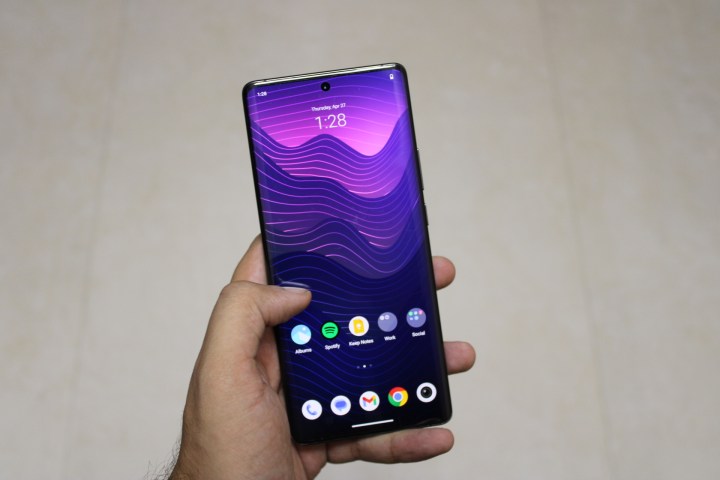The comfort of holding a smartphone is underrated, especially when you consider that most of us hold our phones for at least a quarter of the day. And, unfortunately, it seems like the comfortable form factor of a big phone is the least thought-out feature.
Take any flagship phone with a 6.5-inch+ screen size, for instance. The iPhone 14 Pro Max, Galaxy S23 Ultra, or Xiaomi 13 Pro all have one thing in common: they feature top-notch cameras but aren’t very comfortable to hold, either due to the poor flat edge design or weight distribution. Thankfully, one new smartphone — the Vivo X90 Pro — solves this problem.
A design Apple wishes it could copy

I think the ease of using a phone hardware-wise is one of the most underrated features. The Vivo X90 Pro is a breath of fresh air in the flagship smartphone scene. It is one of those rare phones that provides a combination of flagship cameras with a comfortable-to-hold design.
The narrow form factor with a 6.78-inch AMOLED display is easy to hold and use. As someone who uses big phones for better battery life, the Vivo X90 Pro’s design is a welcome change in my lifestyle.
My primary phone is the iPhone 14 Pro Max. It is a masterclass in how not to design a phone – pairing flat edges with a wide body that weighs heavy is a big no-no for the fingers and wrist. Any Android phone is more comfortable to use than the iPhone counterpart, but Vivo X90 Pro’s narrow design, with a 215-gram weight, gives it the edge over other big flagship phones in the design department.
The Vivo flagship has a lot going for it with that design. Not only is it narrow and on the lighter side, but it features a vegan leather back that adds to the grip and makes it easy to hold. I’ve been using it for almost a week, and not once have my fingers or wrist felt fatigued, which they usually do within a few minutes of iPhone 14 Pro Max use.
The 1-inch sensor makes its mark

The Vivo X90 Pro packs a great camera setup too. It is led by a 50MP 1-inch sensor – the same as the Xiaomi 13 Pro and Oppo Find X6 Pro, which is paired with a 50MP telephoto camera with (disappointingly) just 2x optical zoom and a 12MP ultra-wide lens. Most of its power lies in the primary camera and portrait shots. It also offers a wide variety of filters that you can explore for weeks.
As you can see from the above shots, it captures detailed pictures with vibrant colors. The skin tones are close to what you see in real life. The iPhone makes my skin tone warmer, which is not the case here.
- 1. Portrait in 1x
- 2. Portrait in 2x zoom
In portrait photos, it offers good edge detection, and most of them look more natural than the previous X80 Pro. I’ve captured portrait photos from the Vivo X70 Pro and X80 Pro, and sometimes they looked like the person was separately pasted in the photo because of the unnatural blur. This has been fixed for the most part on the X90 Pro. It’s also a versatile primary camera, thanks to the Zeiss filters.
The telephoto camera only offers 2x zoom, which isn’t much. I’m disappointed here because every other flagship features at least 3x optical zoom, which I’ve grown to use a lot. The 2x zoom on offer is good in quality, but it’s not something that would give you new perspectives or stand out. The ultra-wide camera, on the other hand, is just above average and is nothing to boast about.
What the iPhone 14 Pro Max should have been

I’m most impressed by how Vivo was able to combine the flagship camera experience with an easy-to-hold design. At 84,999 Indian Rupees (about $1,040), the well-performing Dimesnity 9200, paired with 12GB of RAM and 256GB of storage, a good-looking display, a flagship camera, and 120W fast charging for the 4,870mAh battery — the Vivo X90 Pro lies on a slightly expensive side of the spectrum.
But if you value design, and need a flagship phone that’s comfortable to hold with a good primary camera, the Vivo X90 Pro won’t disappoint you. It’s a combination that’s difficult to find in 2023, and I desperately hope Apple, Samsung, and others notice what Vivo’s accomplished here.








